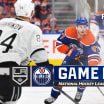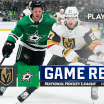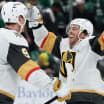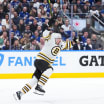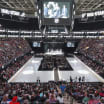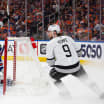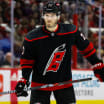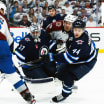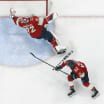Mailbag: Kessel's line with Penguins remains in question
NHL.com's Dan Rosen answers weekly questions
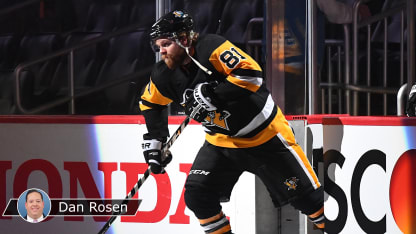
Do you see any weaknesses on the Penguins roster heading into the season? -- @briantodd34
There are no true weaknesses with the Pittsburgh Penguins that I can find, but I do have some questions.
Is right wing Phil Kessel going to play with center Evgeni Malkin? Kessel didn't play with Malkin much during the Stanley Cup Playoffs last season, instead seeing time with Derick Brassard. He wasn't effective to the level we expect from Kessel, with nine points (one goal, eight assists) in 12 games. Penguins coach Mike Sullivan likes Patric Hornqvist on the same line with Malkin or Sidney Crosby. He likes to spread the scoring, meaning having Crosby, Malkin and Kessel on separate lines. He also might like to give 21-year-old right wing Daniel Sprong a look with Crosby. The Penguins like Sprong's potential, but he hasn't had a long enough leash in the NHL to show what he can do. He has five points (four goals, one assist) in 26 games the past three seasons. If Kessel meshes with Brassard, the Penguins should have the lineup they want. But is that what Kessel wants? It's an issue that needs to be ironed out quickly.
Jake Guentzel clearly is the Penguins' top left wing and likely will be back on a line with Crosby. Beyond Guentzel, though, there are questions. If Sprong plays on one of the top three lines at right wing, I wonder if the Penguins would move Bryan Rust to left wing? Rust is versatile enough to play on his off wing. I also think he's better suited to play with Malkin than Carl Hagelin because Rust is just as fast, or at least close to it, with better hands and scoring touch. I have long seen Hagelin as more of a third-line wing because of his ability to check with his speed and play against top lines. The Penguins would prefer to get Malkin out against second and third lines.
Do you think the Toronto Maple Leafs defense is still an issue or can their offense outscore their defensive problems? -- @TJRinger1
Defensive depth is the Maple Leafs' biggest area of concern going into training camp mainly because they don't have a bona fide stud at the position, a player who is guaranteed to play 25 minutes a game and go against top lines every night. If you look across the Atlantic Division, you see other teams who have one or two of those players: Zdeno Chara and Charlie McAvoy with the Boston Bruins, Victor Hedman and Ryan McDonagh with the Tampa Bay Lightning (Mikhail Sergachev soon could be in that category), Aaron Ekblad, Keith Yandle and Mike Matheson with the Florida Panthers, and the likelihood that
Rasmus Dahlin
will be doing it soon with the Buffalo Sabres. That's not including Shea Weber with the Montreal Canadiens and Erik Karlsson with the Ottawa Senators, but there are questions with them; Weber is out until at least December because of knee surgery and Karlsson could be traded.
There are good pieces on the Maple Leafs defense with Morgan Rielly, Nikita Zaitsev, Jake Gardiner, Ron Hainsey and
Travis Dermott
. Dermott's rise last season was big for the Maple Leafs because it gave coach Mike Babcock the opportunity to pencil him into a top-four role at the start of this season with Rielly, Zaitsev and Gardiner. If that's how Babcock sees it, it could save some mileage on Hainsey, who at 37 years old ideally will play fewer minutes this season; he averaged 21:52 of ice time per game last season. If it works out, Dermott could play those minutes and Hainsey could average less than 20 per game. It's fair to question the depth after those five, but that's only because it's unproven. In addition, the Maple Leafs are lefty-heavy; Zaitsev is their lone right-shot veteran. Connor Carrick,
Justin Holl
, 2017 first-round draft pick (No. 17)
Timothy Liljegren
and
Igor Ozhiganov
, who signed as a free agent from the Kontinental Hockey League on May 17, are right-handed shots. It's not clear who among them, if any, will make the NHL roster.
With everyone discounting the Minnesota Wild (just like last year), do you see them being in the mix again? -- @Wild4running
I disagree with your assertion that everyone is discounting the Wild. I haven't seen enough prediction pieces yet to see a consensus of how the pundits (myself included) are leaning. I can speak for myself, and I did not pick the Wild to make the Stanley Cup Playoffs when we did our 31 in 31 series videos. It ran Aug. 15, and you can
watch it here
.
I worry about the Wild's speed, especially with Mikko Koivu and Eric Staal, their top two centers, a year older. Koivu is 35 and Staal turns 34 on Oct. 29. The Wild can't bet on Staal scoring 42 goals again. He could score 30, but they're going to need to make up the rest of the offense. Where is it coming from? Is left wing Jason Zucker going score 33 again? Do they need him to score more? Is left wing Zach Parise going to stay healthy? Is defenseman Ryan Suter going to be able to play almost 30 minutes per game again after rehabbing from his broken right ankle? If he can't, is Matt Dumba ready to pick up some of those minutes? What about Jared Spurgeon? How much can the Wild ask of these guys? Are forwards Charlie Coyle and Nino Niederreiter going to deliver more than the combined 29 goals they scored last season? Are rookie forwards Jordan Greenway and Luke Kunin ready for full-time NHL duty? Every team has questions. To me, it seems like the Wild have a lot of them.
Complicating matters is the math in the Central Division makes it hard on the Wild. I think the Nashville Predators and Winnipeg Jets are playoff givens as two of the best teams in the NHL.
I also think the St. Louis Blues (one point) and Dallas Stars (three points) are better now than they were last season, when they barely missed the playoffs. I like what the Blues did to shore up their center depth with the additions of Ryan O'Reilly and Tyler Bozak. I think coach Jim Montgomery is going to bring the energy back to the Stars. They have the quality goaltending (Ben Bishop) necessary to win. Rookie defenseman
Miro Heiskanen
could be a wild card, forming a dynamic tandem with John Klingberg. I also think the addition of forward Valeri Nichushkin, who returned from two seasons in the KHL, is not being talked about enough.
I'm banking on the Colorado Avalanche to be as good or better than they were last season, when they made the playoffs with 95 points. There always is the possibility for regression from Colorado because of how quick it rose last season after finishing with a League-low 48 points in 2016-17. If it happens, I think that's how the Wild will get into the playoffs again. I don't think it'll happen.
Would like your take on the Washington Capitals signing Sergei Shumakov. Seems like a sneaky good addition to see what he can do at the NHL level for very low risk. -- @profdavek
This is a low-risk, depth move that could work out in the Capitals' favor but won't be detrimental to them if it doesn't. It's a one-year, two-way contract worth $925,000 in the NHL for Shumakov, who turned 26 Tuesday. He tied for first on CSKA Moscow with 40 points (17 goals, 23 assists) in 47 KHL last season. Shumakov is waiver exempt, meaning the Capitals could send him to Hershey of the American Hockey League without worrying risk. But he's going to have to earn his way onto the NHL roster in training camp.
Washington's top-nine forward group is returning intact from last season, and Devante Smith-Pelly and Chandler Stephenson likely will be on the fourth line. That leaves Shumakov competing with Nathan Walker, Shane Gersich, Travis Boyd and Nic Dowd for one spot. Boyd and Dowd are natural centers, which leaves Shumakov battling Walker and Gersich for a spot. It's plausible to think Shumakov can earn that spot, or that an injury will create an opening for him in training camp. Either way I think he's insurance for the Capitals. He could become an important role player, or he could be caught in a numbers game. Either way it's a move that has way more reward than it does risk.
With Seattle likely entering the Pacific Division, which current team in the Pacific Division do you believe is most likely to shift to the Central Division? Arizona? Vegas? Edmonton? -- @SteveRushca
Here's how I would do the alignment if Seattle is awarded the 32nd NHL team through expansion:
Central Division: Nashville Predators, Winnipeg Jets, Chicago Blackhawks, St. Louis Blues, Dallas Stars, Minnesota Wild, Edmonton Oilers, Calgary Flames.
Pacific Division: Los Angeles Kings, Anaheim Ducks, San Jose Sharks, Arizona Coyotes, Vegas Golden Knights, Vancouver Canucks, Colorado Avalanche, Seattle.
Seattle would become geographic rivals with Vancouver, and since both play in the Pacific Time Zone, they must be in the Pacific Division. It makes zero sense to have the three California-based teams in a Central Division, so they stay in the Pacific. The Vegas Golden Knights also are a Pacific Time Zone team. Time zones matter because of local broadcast schedules. It's important for viewership that as many games as possible begin at 7 p.m. or 7:30 p.m. in the local market. I think there could be a good rivalry between Vegas and the Coyotes, so I would keep the Coyotes, a Mountain Time Zone team, in the Pacific Division too. To balance the two divisions so they each have eight teams, I would move the Oilers and Flames to the Central Division and move the Avalanche into the Pacific. This would give the Avalanche, a Mountain Time Zone team, the chance to have geographic rivalries with Arizona and Vegas. It would keep Edmonton and Calgary, each a Mountain Time Zone team, in the same division, a must because of the Battle of Alberta rivalry.

